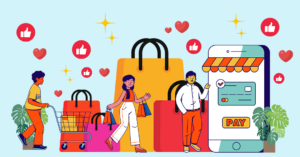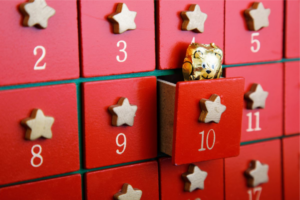As we are closing in the season of love with Valentine’s Day just two weeks away, consumers are now hunting for the perfect restaurant and gift to celebrate. Businesses in the retail and F&B industries are getting ready to take advantage of this special date, historically one of the highest revenue seasons within the year.
According to the National Retail Federation (NRF), US consumers spent $21.8 billion on Valentine’s day in 2021, with the expectation to reach $23.9 billion in 2022, ranking the season as one of the top sales periods of the year. The NRF survey also shows that shoppers expect to spend an average of $175.41 per person on 2022 Valentine’s Day gifts, up from $164.76 in 2021. The increase comes as many intend to spend more on significant others or spouses.
It can be challenging to incentivize your clients to choose your brand among the competition with all the buzz around Valentine’s Day. One of the most successful ways of doing it is simple: run a Product Affinity Analysis (also known as Market Basket Analysis) to identify which items from your business portfolio have a high probability of being purchased together during a specific time and offer smart bundles based on data, creating more attraction to your customers and bringing additional revenue.
Take a look at the different ways conducting an affinity analysis can guide your business.
1. Helps in analyzing consumer behavior
Product Affinity analysis provides in-depth understanding to restaurant and retail owners alike on product relationships. By bringing these high-frequency combinations to light in your customers’ minds, your business can make the most out of the analysis.
Amazon is well-known for displaying affinity-related content on their product pages. This makes it convenient for the business to spot buying patterns with the vast data they collect. The e-commerce giant recommends buyers to add two or more items in their cart instead of one by offering bundles of products that complement one another.
2. Improves marketing campaigns and promotions
Gaining valuable information on the co-occurrent relationships between products allows retailers to set up promotions that feed and drive sales. One of the most common illustrations of this is the purchase of shampoo and conditioner together. A simultaneous promotion on both items would not significantly increase revenue. However, a sale on just one can drive sales in the other due to the high probability of these two products being purchased together.
The results collected will also reinforce marketing campaigns on certain products at a particular time. For example, for Valentine’s Day, we can expect a spike in the sales of chocolates. Leveraging this data, supermarket chains can promote a “Valentine’s Section” with high-affinity items readily accessible for shoppers, increasing the likelihood of them picking up a card or flowers to go with the boxes of chocolate.

3. Shows what products have the potential to cross-sell
Cross-selling is an opportunity for businesses to build strong customer relationships by offering products according to their needs and preferences. It plays a crucial role in boosting revenue as guests are motivated to spend more.
For instance, a fast-food restaurant selling burgers finds that it is commonly bought along with a milkshake or fries as the side, meaning that those items have a high-affinity rate. The employee can suggest adding the milkshake or fries by cross-selling or offering it as a combo deal instead.
Examples on how to leverage Product Affinity
After learning how item affinity analysis can help your business, here are some examples you can take inspiration from!
1. Make your way to your customers’ hearts through Combo meals
Create a variety of appetizing combo deals by pairing up one of your “Most-loved menu items” with a side dish or drink. Take this opportunity to promote a new dish and include it as one of the combos. Keep in mind that it is essential to train your staff on promoting the right combo offers to optimize your results.
Grab the chance to further increase sales by also running the promo on the 13th, Galentine’s Day, and on the 15th, Single Awareness Day. This will bring in new guests while attracting the existing customer base to choose your restaurant as the destination to celebrate.

2. Spread love with Gift bundles
Offering items in the form of a gift bundle makes it convenient for your clients to pick out Valentine’s gifts to give to their loved ones. Rather than just purchasing one item from your store, buyers will be encouraged to go for a gift box specially designed according to the occasion.
A customizable gift box is another engagement tool where your staff can suggest cross-selling items to complement each other. In this way, it will be a memorable experience for the buyer and the receiver, improving customer satisfaction and loyalty towards your brand.
The information gained through item affinity analysis can significantly help and impact the way your business operates. It demonstrates that you know what your customers want by immediately responding to their needs. Although, you will need to evaluate your business’s priorities before deciding to implement changes based on the insights provided by the analysis.
Gain meaningful data on your customers’ purchase behavior and leverage automated item-affinity analysis with Como. Contact us to learn more!




